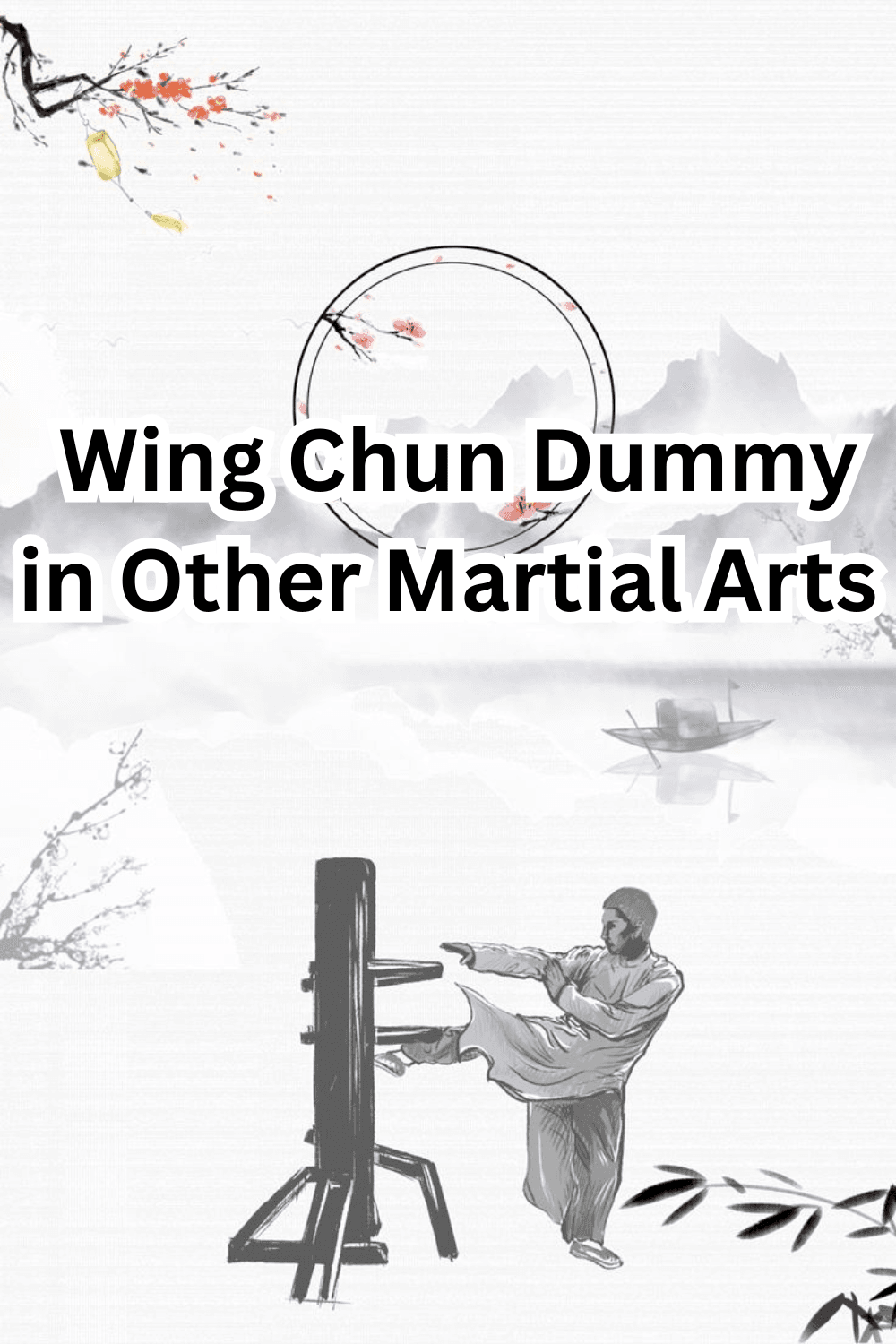The fist bump is a simple yet profound gesture that holds significant meaning in the context of martial arts.
It transcends various disciplines, symbolizing respect, sportsmanship, and camaraderie among practitioners.
Unlike a handshake or a high-five, the fist bump is uniquely suited to martial arts, where direct physical contact is a crucial aspect of training and competition.
Historically, the fist bump is believed to have originated from practices in boxing and other combat sports,
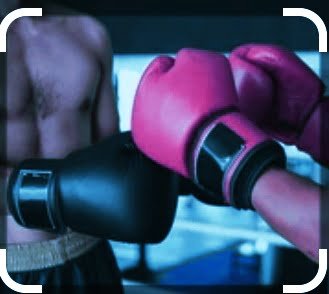
where protective gloves made traditional handshakes impractical.
Over time, this gesture has been adopted by a wide range of martial arts disciplines,
from karate and taekwondo to Brazilian jiu-jitsu and mixed martial arts.
It serves as a non-verbal acknowledgment of mutual respect and a shared commitment to the values that underpin martial arts.
In pre-training or sparring sessions, the fist bump acts as a ritualistic gesture that sets the tone for the upcoming practice.
It signifies the beginning of a respectful exchange, reminding practitioners of the importance of integrity, humility, and fair play.
This small act fosters a sense of unity and mutual understanding, essential for creating a positive and conducive training environment.
Post-training or sparring, the fist bump takes on an equally important role.
It serves as a gesture of gratitude and recognition for the effort and skill demonstrated by one’s training partners.
Regardless of the outcome, this small act reaffirms the bonds of friendship and respect, reinforcing the martial arts community’s spirit of continuous improvement and mutual support.
In essence, the fist bump in martial arts is more than just a casual greeting.
It is a meaningful tradition that encapsulates the core values of respect, sportsmanship, and camaraderie.
By integrating this simple yet powerful gesture into their routines, martial artists honor the rich heritage and the enduring principles that define their practice.
Proper Technique for a Fist Bump
Mastering the art of the fist bump in martial arts requires precision and respect.
To execute a proper fist bump, follow these step-by-step instructions to ensure you convey camaraderie while maintaining safety.
The first step is to position your fist correctly.
Form a fist by curling your fingers inward, ensuring your thumb rests securely across the outside of your curled fingers.
Your fist should be firm but not overly tight to prevent unnecessary strain.
Extend your arm forward at a comfortable angle, usually around chest height.
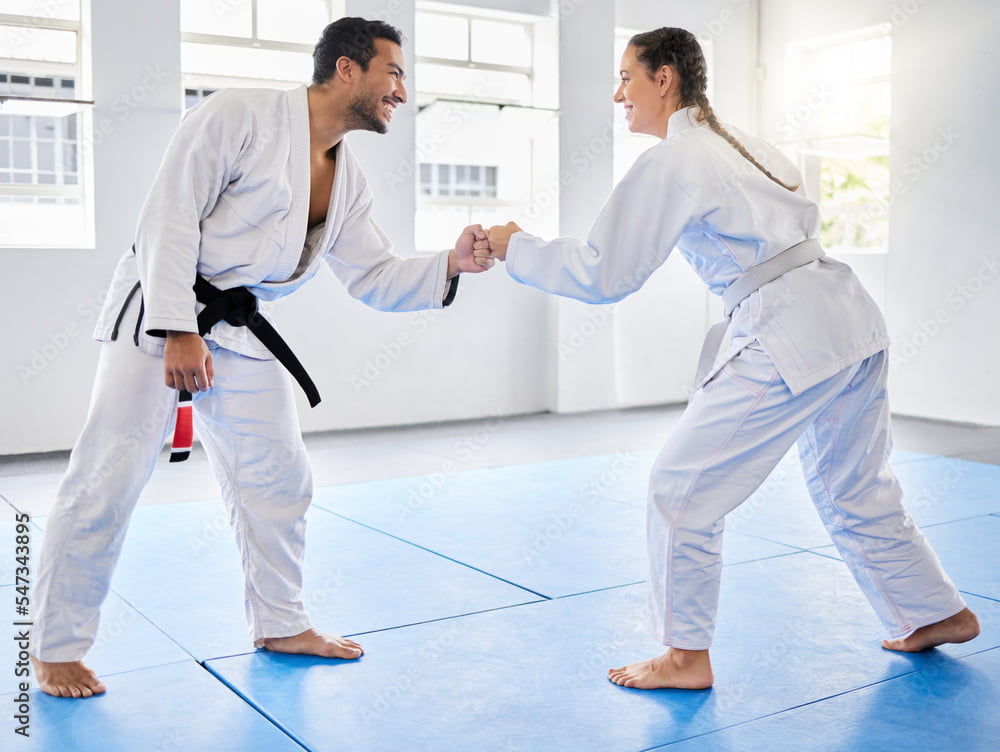
This positioning allows both parties to engage in the gesture seamlessly.
Maintaining eye contact is crucial during a fist bump.
This practice not only shows respect but also ensures both participants are aware of the impending gesture, reducing the risk of accidental injury.
As you extend your fist, make eye contact with your partner to communicate intent and appreciation.
Applying the right amount of force is essential for a successful fist bump.
Too much force can result in discomfort or injury, while too little may seem insincere.
Aim for a light yet firm tap, enough to make contact without causing pain. The goal is to establish a connection, not to test strength.
Avoiding injury is paramount. Refrain from pulling back your fist too quickly after contact, as this can lead to accidental scraping of knuckles or fingers.
Instead, allow the contact to be brief and controlled, withdrawing your fist smoothly after the bump.
This method ensures a respectful and injury-free exchange.
In martial arts, the fist bump transcends a simple greeting; it embodies mutual respect and solidarity.
By following these guidelines, you can perfect the technique, making each fist bump a meaningful and safe gesture.
Fist Bump Etiquette in Various Martial Arts
Fist bump etiquette varies significantly across different martial arts disciplines, reflecting both cultural nuances and the unique characteristics of each martial art.
In Karate, for instance, the fist bump is often used as a sign of mutual respect before and after sparring sessions.
Practitioners bow to show respect and then engage in a brief fist bump, symbolizing camaraderie and sportsmanship.

This ritual emphasizes the importance of humility and respect within the discipline.
In Taekwondo, the fist bump has a similar connotation but is often integrated into more structured training environments.
Here, it is common to see fist bumps exchanged not only among peers but also between students and instructors.
This practice reinforces the hierarchical respect inherent in Taekwondo, where the gesture is a nod to both equality and reverence for authority within the dojo.
Brazilian Jiu-Jitsu (BJJ), on the other hand, places a strong emphasis on the community aspect of training.
The fist bump in BJJ is a universal sign of goodwill, exchanged before and after grappling sessions.
It’s a gesture that transcends language barriers, making it an essential part of the culture in a sport that is practiced globally.
The informal nature of BJJ lends itself to a more relaxed interpretation of the fist bump, making it a staple of the discipline’s camaraderie-based ethos.
In Muay Thai, the fist bump is less formal but equally significant.
Given the sport’s intense physical demands, the gesture serves as a quick, mutual acknowledgment of respect and readiness before engaging in sparring.
It’s a brief but meaningful exchange that underscores the martial art’s focus on respect and warrior spirit.
Lastly, in Judo, the fist bump is a relatively recent addition, influenced by the growing global popularity of mixed martial arts.
Traditionally, Judo emphasizes bowing as a sign of respect.
However, the incorporation of the fist bump has been embraced by many practitioners as a modern complement to traditional practices.
This blend of old and new highlights the evolving nature of martial arts etiquette.
Fist Bump Alternatives: Bowing and Other Gestures
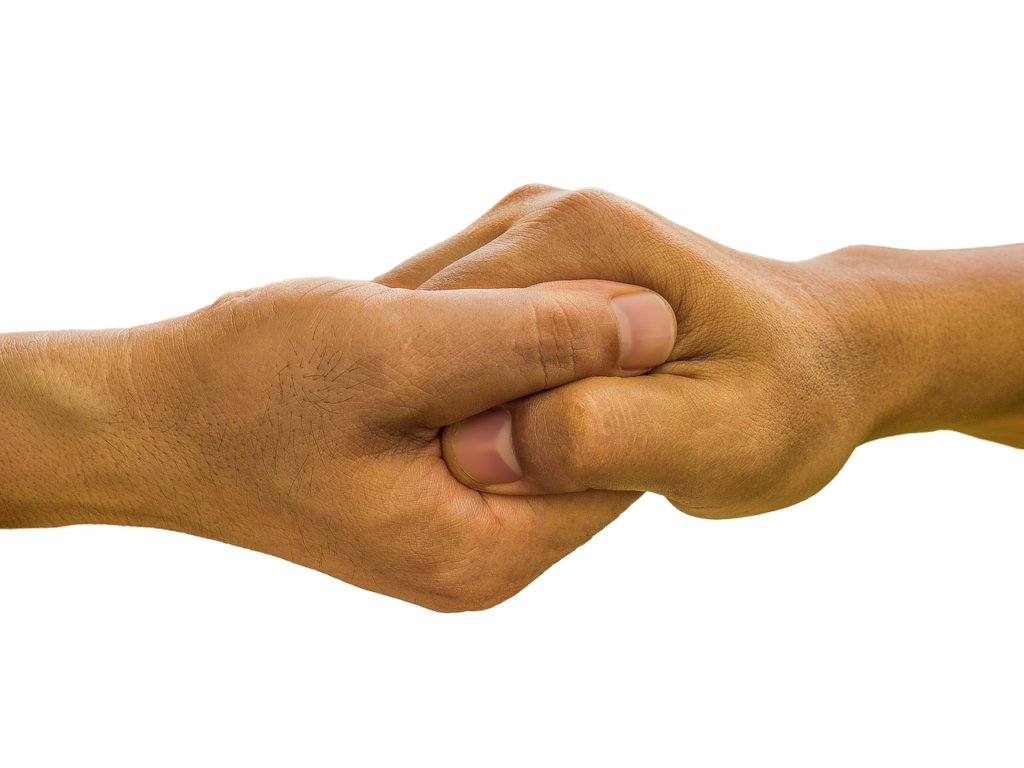
In the realm of martial arts, gestures of respect play a pivotal role in fostering discipline, camaraderie, and mutual understanding among practitioners.
While the fist bump is a relatively modern and casual form of greeting, several traditional gestures hold significant importance in various martial arts disciplines.
One of the most prominent gestures is bowing, especially prevalent in traditional Japanese martial arts such as Karate, Judo, and Aikido.
Bowing serves as a universal sign of respect, humility, and gratitude.
It is performed at the beginning and end of practice sessions, during competitions, and when greeting or thanking an instructor or fellow practitioner.
The depth and duration of the bow can vary, reflecting the level of respect being conveyed.
This gesture not only signifies respect but also reinforces the disciplined and hierarchical nature of martial arts training.
In contrast, Western martial arts and combat sports often utilize the handshake as a gesture of respect.
Handshakes are common in disciplines such as Boxing, Wrestling, and Mixed Martial Arts (MMA).

They are typically exchanged before and after a bout, symbolizing sportsmanship, mutual respect, and the acknowledgment of the opponent’s skills.
The handshake is straightforward and familiar, resonating well within the Western cultural context.
Comparatively, the fist bump stands out as a more informal and contemporary alternative.
It is widely adopted across various martial arts communities and is especially popular among younger practitioners.
The fist bump is quick, hygienic, and conveys a sense of camaraderie and mutual acknowledgment without the formality of a bow or handshake.
It is often used in casual training environments and can serve as an icebreaker or a morale booster among peers.
Each of these gestures — bowing, handshakes, and fist bumps — holds its unique significance and context within the martial arts world.
The choice of gesture often depends on the cultural background of the martial art, the setting, and the relationship between the individuals involved.
Understanding and respecting these differences is crucial for fostering a respectful and harmonious training environment.
The psychological impact of the fist bump in martial arts is both profound and multifaceted.
At its core, this simple gesture goes beyond a mere physical act, playing a pivotal role in shaping the mental and emotional dynamics among practitioners.
One of the foremost psychological benefits of the fist bump is its ability to build trust.
In martial arts, trust is paramount, as practitioners often put themselves in vulnerable positions during training.
A fist bump serves as a non-verbal affirmation of mutual respect and assurance, reinforcing the bond between training partners.
Furthermore, the fist bump significantly reduces tension.
Martial arts training can be intense, with high stakes and the inherent risk of injury.
The act of fist bumping can act as a psychological reset, a momentary pause that alleviates stress and anxiety.
This gesture signals that despite the rigorous training, there is a shared understanding and camaraderie, making the environment more conducive to learning and growth.
Another crucial aspect of the psychological impact of the fist bump is its role in fostering a sense of unity.
Martial arts, while often practiced individually, is deeply rooted in community and collective effort.
The fist bump encapsulates this spirit of togetherness, serving as a symbol of solidarity and shared purpose.
It reminds practitioners that they are part of a larger community, working towards common goals of self-improvement and mastery.
Moreover, the fist bump engenders mutual respect among martial artists.
Respect is a cornerstone of martial arts philosophy, and gestures like the fist bump reinforce this principle in a tangible way.
It acknowledges the effort and dedication of training partners, creating a positive feedback loop that enhances motivation and commitment.
In essence, the fist bump in martial arts is more than just a gesture;
it is a powerful psychological tool that builds trust, reduces tension, fosters unity, and reinforces mutual respect.
Its impact resonates deeply within the martial arts community, shaping the mental and emotional landscape of practitioners.
In martial arts, the fist bump serves as a gesture of respect, encouragement, and camaraderie among practitioners.
Understanding when to use this simple yet powerful gesture can enhance the training environment and build stronger bonds between martial artists.
Here are several scenarios where the fist bump is most appropriately utilized during martial arts training.
Before and After Sparring
Sparring sessions are an integral part of martial arts training, providing practitioners with the opportunity to apply techniques in a controlled, competitive environment.
Before engaging in sparring, a fist bump signifies mutual respect and acknowledgment of each other’s skills and efforts.
It sets a positive and respectful tone, ensuring that both participants approach the session with a mindset focused on learning and improvement.

After sparring, a fist bump serves as an appreciation for each other’s contributions and efforts, reinforcing the spirit of sportsmanship and camaraderie.
After Successfully Executing a Technique
Training sessions often involve practicing techniques repeatedly to achieve proficiency.
When a practitioner successfully executes a technique, especially one that has been challenging to master, a fist bump from a training partner or instructor can be a significant morale booster.
This gesture not only recognizes the effort and progress made but also encourages a supportive training atmosphere.
Celebrating small victories with a fist bump can motivate practitioners to continue striving for excellence.
During Competitions or Public Demonstrations
Competitions and public demonstrations are high-pressure scenarios where martial artists showcase their skills and dedication.
In these settings, a fist bump can serve multiple purposes.
Before a competition match, a fist bump between competitors demonstrates mutual respect and recognition of each other’s hard work and dedication.
After the match, regardless of the outcome, a fist bump reinforces sportsmanship and respect for the opponent’s abilities.
During public demonstrations, instructors and students may use fist bumps to acknowledge successful performances, promoting a positive and cohesive team spirit.
Incorporating the fist bump into various training scenarios not only enhances the overall training experience.
but also fosters a culture of respect, encouragement, and camaraderie among martial artists.
Common Mistakes and How to Avoid Them
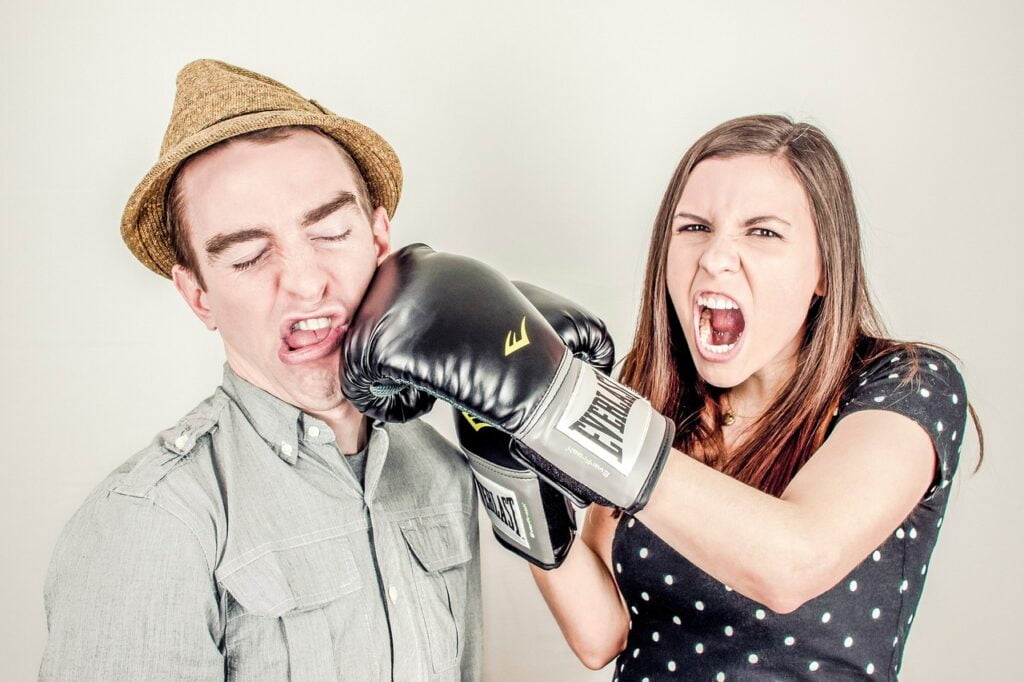
In the realm of martial arts, the fist bump is more than just a simple gesture;
it signifies respect, camaraderie, and mutual acknowledgment.
However, practitioners often make several common mistakes when executing this seemingly straightforward action.
One of the most frequent errors is the application of excessive force.
While the intent might be to demonstrate enthusiasm or strength,
overzealousness can lead to discomfort or even minor injuries.
To avoid this, martial artists should aim for a gentle yet firm contact,
reflecting mutual respect rather than dominance.
Timing also plays a crucial role in the effectiveness of a fist bump.
Poor timing can lead to awkwardness or missed connections, undermining the intended gesture of respect.
It is essential to be attentive and synchronize the movement with your partner.
Practicing situational awareness and anticipation can significantly enhance the fluidity and timing of the fist bump, ensuring it aligns seamlessly with the flow of interaction.
Another common mistake is the lack of eye contact.
Eye contact is a fundamental aspect of non-verbal communication, conveying sincerity and mutual respect.
Failing to establish eye contact can make the gesture feel impersonal or insincere.

To foster a more genuine connection, martial artists should make a conscious effort to look their partner in the eyes during the gesture.
This simple act can significantly elevate the meaning and impact of the fist bump.
To avoid these pitfalls, martial artists can benefit from mindful practice and feedback.
Engaging in drills that focus on the subtleties of the fist bump,
including force modulation, timing, and eye contact, can help refine the gesture.
Seeking feedback from peers or instructors can provide valuable insights and aid in perfecting this respectful form of acknowledgment.
By addressing these common mistakes and honing their approach, martial artists can master the art of the fist bump, reinforcing the values of respect and camaraderie inherent in martial arts.
The Future of the Fist Bump in Martial Arts
The fist bump, a gesture symbolizing respect and camaraderie, has been a staple in martial arts for years.
As we navigate through global health concerns like COVID-19, before 5 years, the future of this practice is bound to evolve.
The pandemic has altered many social norms, compelling martial arts communities to rethink traditional gestures to ensure safety while preserving the essence of mutual respect.
The fist bump’s low-contact nature makes it an inherently safer alternative to handshakes or hugs.

However, its execution may require further adaptation.
For instance, practitioners might adopt no-contact variations, such as mimicking the motion of a fist bump without actual physical contact.
This adjustment could help maintain the symbolic significance of the gesture while minimizing the risk of virus transmission.
Another potential evolution lies in increased hygiene measures.
Martial arts dojos implement protocols where participants are require to sanitize their hands before and after training sessions.
This practice would help mitigate health risks associated with direct contact, ensuring the fist bump remains a viable expression of respect.
Moreover, the integration of technology in martial arts training influence how gestures like the fist bump can improve your respect.
Virtual training sessions have become more common, offering a platform for practitioners to engage in martial arts without physical presence.
In this context, digital fist bumps could emerge as a new norm, allowing students and instructors to maintain a sense of connection and respect through virtual means.
As martial arts communities adapt to these changes, the underlying principles of respect, discipline, and camaraderie must remain intact.
The evolution of the fist bump, whether through no-contact variations, enhanced hygiene practices, or digital alternatives, should serve to reinforce these core values.
By embracing these modifications, martial arts can continue to thrive, fostering a safe and respectful environment for all practitioners.


